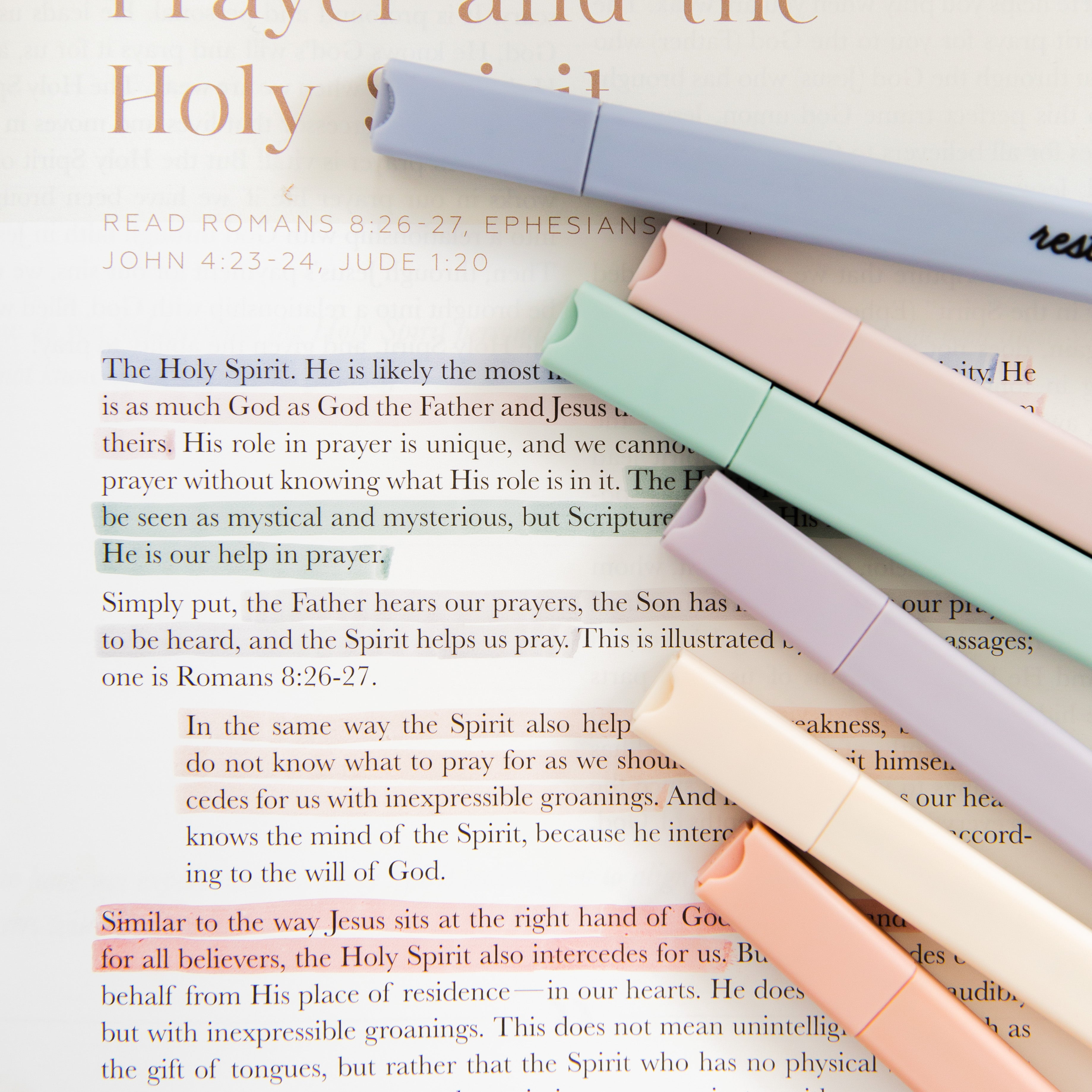When I was a young Christian, I would often give my testimony like this: “I was saved when I was seven years old, but I truly surrendered my life to Christ when I was fourteen years old.”
Perhaps you or someone you know has told their testimony in a similar manner. While this kind of testimony may describe our perception of our story, it can also potentially portray a “let go and let God” mentality that does not accurately represent the process of sanctification—the progressive work of God in our lives to grow us in Christlikeness.
Is “Let Go and Let God” Biblical?
“Let go and let God” stands among a number of phrases that are often mistaken as Scripture, including “God helps those who help themselves” and “everything happens for a reason.” Even though “let go and let God” is not in the Bible, the phrase might appear to be supported by Scripture on a cursory reading.
After all, Jesus told us not to worry about our lives because God will provide for our needs (Matthew 6:25–34). But on a deeper reading, this phrase is not a call to release our anxieties to God. Instead, “let go and let God” portrays a particular and dangerous view of the Christian life that is not biblical. Originating in early Keswick (pronounced KEH-zick) theology (more broadly known as Higher Life or second-blessing theology), “let go and let God” is a proverbial description of this theology’s view on sanctification. And although the phrase might initially seem to be a desirable attitude for approaching the Christian life, it is ultimately an unbiblical description of sanctification.
The Dangers of “Let Go and Let God”
Keswick theology’s distinctive belief is that there are two categories of Christian. The first category is made up of those who have been “justified” through faith in Jesus as their Savior. The second category is made up of those who have been “consecrated” through complete surrender to Jesus as their Lord and Master. At the moment of consecration, the Christian’s life does a complete 180°. The Christian moves from shallow faith to deep faith, defeat to victory, and sinfulness to holiness. The Christian who has received this “second blessing” has “let go” of all their willpower-focused attempts to be holy and simply “let God” provide this holiness for them. Any effort the Christian puts forth in their own sanctification is considered a sinful attempt to change oneself, a moralistic impulse that should be “let go.” According to Keswick theology, a Christian can only experience this second blessing through a complete detachment from any human contribution to it.1
How Keswick theology misses the mark can be illustrated. In his book Celebration of Discipline, Richard J. Foster describes sanctification as a narrow road with two sheer drop-offs on either side, each representing common errors.2 One chasm is moralism and legalism, which Keswick theology is intentionally trying to avoid. The other chasm is a lack of conviction for holiness—which Keswick theology unfortunately falls into by overcorrecting for legalism. While Keswick theology’s concern is genuine, it ultimately disregards the effect and importance of human effort in sanctification by emphasizing passivity rather than activity.
Sanctification in the Bible
Contrary to Keswick theology, the New Testament teaches that we are to put forth effort toward our sanctification. For example, Peter directs us to “make every effort” to supplement our faith with virtue (2 Peter 1:5). Yet the New Testament also maintains that sanctification is a gift of grace wrought by the Spirit. Alongside Peter, the Apostle Paul can declare that the Spirit is the one who transforms us into the image of Christ (2 Corinthians 3:18). So is sanctification a product of our effort or God’s work?
The answer is that sanctification is a product of both our effort and God’s work. A critical passage that reveals the interaction of effort and God’s work is Philippians 2:12–13: “Therefore, my dear friends, just as you have always obeyed, so now, not only in my presence but even more in my absence, work out your own salvation with fear and trembling. For it is God who is working in you both to will and to work according to his good purpose.” This verse describes both the effort that we are to put forth in obeying God following our decision to trust Jesus as our Savior (“work out your own salvation with fear and trembling”) as well as the role that God plays in it (“it is God who is working in you”).

Foster expands an image from the Bible to describe this interaction further. Reflecting on Galatians 6:8, Foster likens sanctification to farming. A farmer is helpless to make leaves sprout from a seed, cause the plant to photosynthesize, or produce fruit in the end. But the farmer is responsible for tilling the soil, planting the seed, and watering the plants. So it is with sanctification. We must place ourselves in the ground before God so that He can do the miraculous work of producing growth, which is Christlikeness. Paul uses a similar agricultural analogy when describing the role of God’s people in evangelism: “I planted, Apollos watered, but God gave the growth” (1 Corinthians 3:6). We put forth effort, but God provides the growth through His grace.
The truth is, the Bible does not place effort and grace in opposition. Dallas Willard states this truth succinctly when he says, “Grace is not opposed to effort, it is opposed to earning. Earning is an attitude. Effort is an action.” While Keswick theology rightly discards any sinful attitude of earning, it unhelpfully throws effort out with it. Keswick theology portrays a half-truth: We can say “yes” to not earning our salvation, but we must say “no” to being passive in our sanctification.

One passage that makes this explicit is Galatians 5, in which Paul describes the Christian’s lifelong struggle with sin. Paul declares that it is only because of Christ’s death and resurrection that we are given freedom from sin and death (Galatians 5:1). Yet Paul still tells the Galatians, “don’t use this freedom as an opportunity for the flesh, but serve one another through love” (Galatians 5:13). In other words, the freedom that Christ bought us is not to be abused but used for the love of others that glorifies God. If we “let go” of all effort, that letting go will ultimately become an opportunity for the flesh and sin to take over—producing the opposite result that a “let go and let God” mentality would suggest.
Conclusion
On its face, “let go and let God” seems like a helpful platitude that encourages us to give up the things that worry us and allow God to take control. But underneath the pithy language is a theology of sanctification that eliminates human responsibility. Justification happens in a moment, but sanctification happens over a lifetime. Just like a farmer has to work the field day after day, we are to effortfully place ourselves in the hands of God who ultimately produces good works and Christlike character in us. We do this through things like prayer, reading of Scripture, confession and repentance, worship, service, and fellowship with other believers. In the words of J. I. Packer, “The Christian’s motto should not be ‘Let go and let God’ but ‘Trust God and get going!’”3

Notes:
-
Andrew David Naselli, “Keswick Theology: A survey and analysis of the doctrine of sanctification in the early Keswick movement,” Detroit Baptist Seminary Journal 13 (2008), 17, 28–31.
-
Richard J. Foster, Celebration of Discipline: The Path to Spiritual Growth, 4th ed. (San Francisco: HarperOne, 2018), 8.
-
J. I. Packer, Keep in Step with the Spirit (Grand Rapids: Revell, 1984), 157.










